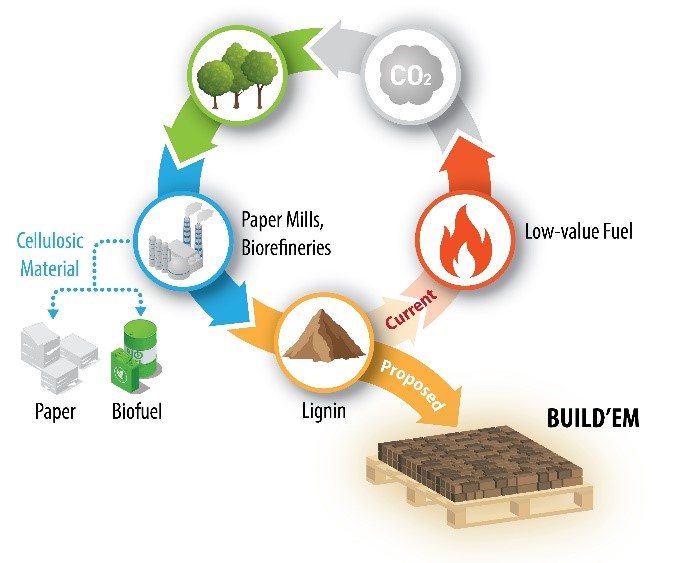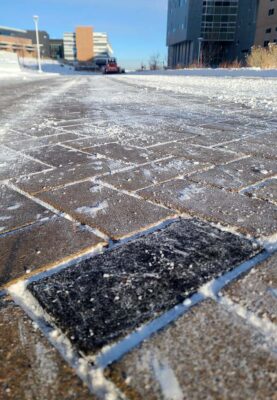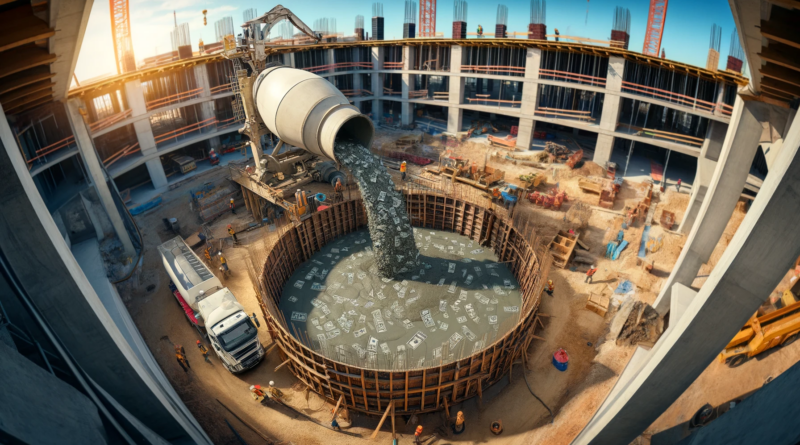NREL Researchers Pave the Way for Carbon-Negative Concrete
Support CleanTechnica's work through a Substack subscription or on Stripe.
BUILD’EM Represents a Promising Step Toward a Greener Construction Industry
Outside the National Renewable Energy Laboratory’s (NREL’s) Research Support Facility and its Café, there are two curious brick pavers unlike the others nearby.
One of the stones is embossed with the phrase “BUILD’EM”—short for Biomass Upcycled in Lignin for Decarbonizing Energy-Intensive Materials. These pavers signify the quest of lead researcher Paul Meyer and team, including Julia Sullivan, Kyle Foster, Bob Allen, Jingying Hu, and Heather Goetsch, to unearth a carbon-negative alternative to traditional concrete.
A Need To Decarbonize Cement and Concrete

The U.S. Department of Energy’s (DOE’s) Industrial Decarbonization Roadmap identifies the U.S. cement industry as one of four pivotal paths to reduce industrial emissions through innovative American manufacturing. To align with net-zero goals, the roadmap outlines strategies such as waste reduction in concrete construction, innovative technologies, carbon capture, and use of low-carbon materials.
Cement production is notorious for its energy consumption and production of carbon emissions. The process requires heating billions of tons of materials to 1450°C, generally achieved using coal or natural gas. Not only are there emissions associated with these high temperatures, but the chemical reaction typically used to make cement involves transforming calcium carbonate into calcium-oxide-like compounds, which generate carbon dioxide (CO2) as a reaction byproduct. Combined, these emissions are responsible for approximately 7% of world greenhouse gas production.
Developing Carbon-Negative Alternatives

Meyer’s journey into research was shaped by a fascination with deconstructing and understanding complex systems. Their passion for unraveling the inner workings of things led them down an innovative path.
With a background in polymer chemistry, they saw potential in epoxy-like resins as an alternative to traditional cement and pivoted in that direction. Instead of
using cement as a binder for aggregate, Meyer aimed to use a polymer-based system that did not emit carbon dioxide during synthesis and could use substantially lower temperatures (around 60°C to 200°C). Additionally, epoxy resins are known to have higher strength than concrete, allowing them to fulfill the high strengths required. This approach had the potential to decarbonize the industry without expensive carbon-capture techniques. However, traditional epoxy resin systems tend to be even more carbon intensive and expensive than cement. Thus, Meyer investigated a base material from a cheap, low-carbon alternative.
At around the same time, Meyer learned about the large amount of waste lignin that is produced every year, primarily from pulp and paper processes, which is also expected to be produced from biorefineries in the future.
Lignin is the second-most abundant biomaterial on the planet and is a critical part of nearly all terrestrial plant life. During the production of pulp and paper products, roughly 100 million tons of lignin are produced annually as a waste byproduct and subsequently burned as low-value fuel.
Meyer saw lignin as a polymer that could be used as a material instead of a fuel and sought to crosslink it like an epoxy resin. Using lignin allowed Meyer to sequester CO2 captured from the air in the form of biomass that would otherwise be burned.
Using internal seed funding from NREL’s Laboratory Directed Research and Development program, the team determined a combination of chemicals that could not only achieve the same strength of traditional concrete but substantially exceed it. The team also conducted a life-cycle assessment and techno-economic analysis to determine that, even with the additional processing required, BUILD’EM produced 50% to 80% lower emissions and began to approach similar costs as cement-based concrete.
“It’s basically concrete but carbon negative. If we’re very optimistic, it could affect as much as 7% of world emissions while being economically competitive,” Meyer said.
Meyer emphasized the abundance and scalability of their approach, with the potential to produce at least 100 million tons per year from plant-derived materials and a realistic pathway toward total market replacement.
The Future of BUILD’EM

BUILD’EM aligns with DOE’s commitment to decarbonizing the industrial sector and the bigger-picture goals of creating jobs, promoting economic growth, and fostering a cleaner, more equitable future.
“Equity is a significant aspect,” Meyer said. “Lignin is everywhere, and sourcing it locally is feasible. The curing process requires low temperatures, making it accessible even in regions without access to the grid. It’s a simple and adaptable solution.”
Despite the promising strides of BUILD’EM, the team acknowledges the long head start traditional concrete research has enjoyed since its inception over two centuries ago.
“We hope to expand our understanding of these materials,” Meyer added. “As far as our product is concerned, people have driven over it and stepped on it. One guy even kissed it. It’s water-resistant.”
As the team at NREL continues their innovative work and earns further funding, they hope to expand their lignin research to create sustainable, carbon-negative alternatives for construction.
“Without our highly talented interns, this project would not be a reality,” Meyer said. “It would go at a snail’s pace, and the climate doesn’t have time for that. They’re the ones in the lab getting their hands dirty.”
Meyer wanted to especially note and share credit in success with Karli Gaffrey, Rebecca Erwin, Tyler Bailey, Elise Harrison, Bernadette Magalindan, Thomas Spradley, Jasmine Liu, Micah Duffield, and Ulysses Alfaro. Meyer also acknowledged the guidance they received from numerous advisors, including Lori Tunstall, Nicolas Rorrer, Xiaowen Chen, Mike Himmel, Shuang Cui, and Kevin Rens.
Meyer said the next steps will involve a deep dive into the fundamental chemistry, resistance to several weathering conditions, and optimization of the formula to balance performance, cost, and emissions. The team also plans for increasing production of the pavers to multiton scales and replacing roadway sections as a demonstration of both resilience and industrial relevance. Their ultimate goal is a product that can simultaneously withstand 8,000 pounds per square inch of compressive force, be carbon neutral, and reach the same price point as cement-based concrete with similar durability.
Learn more about NREL’s building technologies and science research.
Courtesy of NREL.
Sign up for CleanTechnica's Weekly Substack for Zach and Scott's in-depth analyses and high level summaries, sign up for our daily newsletter, and follow us on Google News!
Have a tip for CleanTechnica? Want to advertise? Want to suggest a guest for our CleanTech Talk podcast? Contact us here.
Sign up for our daily newsletter for 15 new cleantech stories a day. Or sign up for our weekly one on top stories of the week if daily is too frequent.
CleanTechnica uses affiliate links. See our policy here.
CleanTechnica's Comment Policy

